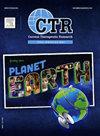Safety and Efficacy of a Mesenchymal Stem Cell Secretome Therapy (KPI-012) for Persistent Corneal Epithelial Defects: A Phase 1b Trial
IF 1.5
Q3 MEDICINE, RESEARCH & EXPERIMENTAL
Current Therapeutic Research-clinical and Experimental
Pub Date : 2025-01-01
DOI:10.1016/j.curtheres.2025.100799
引用次数: 0
Abstract
Background
Persistent corneal epithelial defect (PCED) is a condition often refractory to conventional treatments. KPI-012 is a topical mesenchymal stem cell secretome therapy under investigation for PCED management.
Objective
To assess the safety, tolerability, and corneal wound healing efficacy of KPI-012 in a phase 1b, proof-of-concept, open-label, single-arm clinical trial.
Methods
The safety profile and tolerability of topical self-administered KPI-012 therapy (twice daily, 1-week duration) were first evaluated in an initial safety cohort of participants with pre-existing permanent vision loss and no active corneal disease (n = 3). The safety profile and efficacy of KPI-012 were then assessed in participants with PCED of several etiologies (n = 9), who self-administered KPI-012 twice daily for up to 4 weeks with one participant self-administering for 8 weeks (efficacy cohort).
Results
KPI-012 was well tolerated in both the safety profile and efficacy cohorts. In the efficacy cohort (n = 9), 6 of 8 participants (75%) demonstrated complete healing of the lesion during the treatment period, with 4 of 8 (50%) achieving complete healing within 1 week of commencing KPI-012 therapy (a nontreatment-related adverse event meant 1 participant was withdrawn by the investigator). KPI-012 was well tolerated, with only 1 participant experiencing treatment-related adverse events. In patients who reported PCED-related ocular pain at baseline (n = 7), pain levels decreased in all participants after 1 week, and after 3 weeks, no participant reported ocular pain.
Conclusions
The results from this small phase 1b open-label trial suggest that in participants with PCED of multiple etiologic origin, twice daily KPI-012 therapy exhibits a favorable safety profile-efficacy profile and may promote rapid wound healing. The small sample size limits the generalizability of the findings, and thus a later-phase clinical investigation with a larger sample size is warranted to establish the statistically driven therapeutic effect.
间充质干细胞分泌组疗法(KPI-012)治疗持续性角膜上皮缺陷的安全性和有效性:1b期试验
背景:持续性角膜上皮缺损(PCED)是一种常规治疗难以治愈的疾病。KPI-012是一种局部间充质干细胞分泌组疗法,正在研究用于PCED治疗。目的在一项1b期、概念验证、开放标签、单臂临床试验中评估KPI-012的安全性、耐受性和角膜创面愈合效果。方法:首先在一个预先存在永久性视力丧失且无活动性角膜疾病( = 3)的参与者的初始安全性队列中评估局部自我给药KPI-012治疗(每天两次,持续1周)的安全性和耐受性。然后在几种病因的PCED患者(n = 9)中评估KPI-012的安全性和有效性,这些患者每天两次自我服用KPI-012,持续4周,其中一名参与者自我服用8周(疗效队列)。结果skpi -012在安全性和有效性队列中均具有良好的耐受性。在疗效队列中(n = 9),8名参与者中有6名(75%)在治疗期间表现出病变完全愈合,8名参与者中有4名(50%)在开始KPI-012治疗后1周内实现完全愈合(非治疗相关不良事件意味着1名参与者被研究者撤回)。KPI-012耐受性良好,只有1名参与者出现与治疗相关的不良事件。在基线时报告pced相关眼部疼痛的患者中(n = 7),所有参与者的疼痛水平在1周后下降,3周后,没有参与者报告眼部疼痛。这项小型1b期开放标签试验的结果表明,对于多种病因的PCED患者,每天两次的KPI-012治疗显示出良好的安全性和有效性,并可能促进伤口快速愈合。小样本量限制了研究结果的普遍性,因此需要更大样本量的后期临床研究来确定统计学驱动的治疗效果。
本文章由计算机程序翻译,如有差异,请以英文原文为准。
求助全文
约1分钟内获得全文
求助全文
来源期刊
CiteScore
3.50
自引率
0.00%
发文量
31
审稿时长
3 months
期刊介绍:
We also encourage the submission of manuscripts presenting preclinical and very preliminary research that may stimulate further investigation of potentially relevant findings, as well as in-depth review articles on specific therapies or disease states, and applied health delivery or pharmacoeconomics.
CTR encourages and supports the submission of manuscripts describing:
• Interventions designed to understand or improve human health, disease treatment or disease prevention;
• Studies that focus on problems that are uncommon in resource-rich countries;
• Research that is "under-published" because of limited access to monetary resources such as English language support and Open Access fees (CTR offers deeply discounted English language editing);
• Republication of articles previously published in non-English journals (eg, evidence-based guidelines) which could be useful if translated into English;
• Preclinical and clinical product development studies that are not pursued for further investigation based upon early phase results.

 求助内容:
求助内容: 应助结果提醒方式:
应助结果提醒方式:


